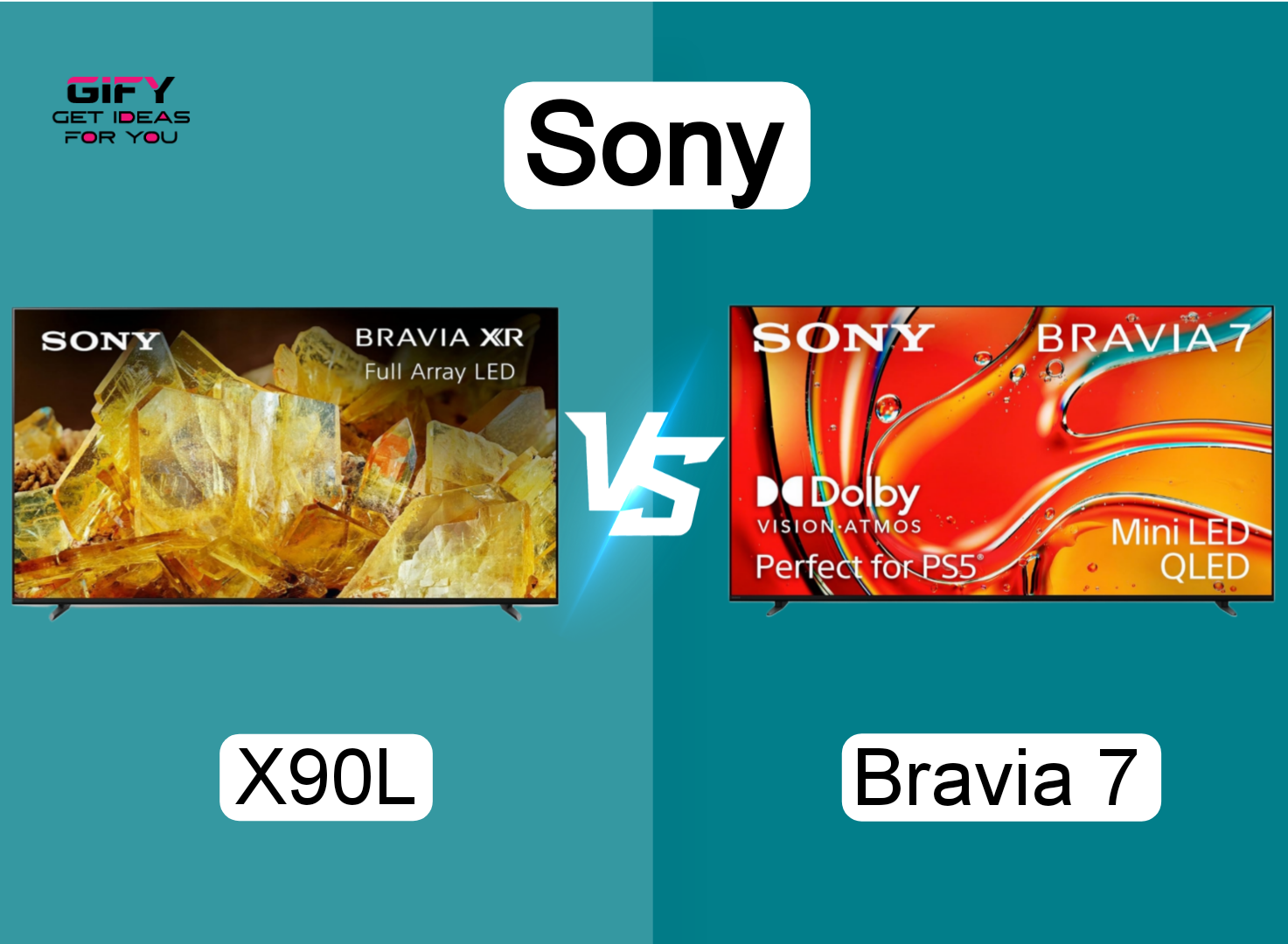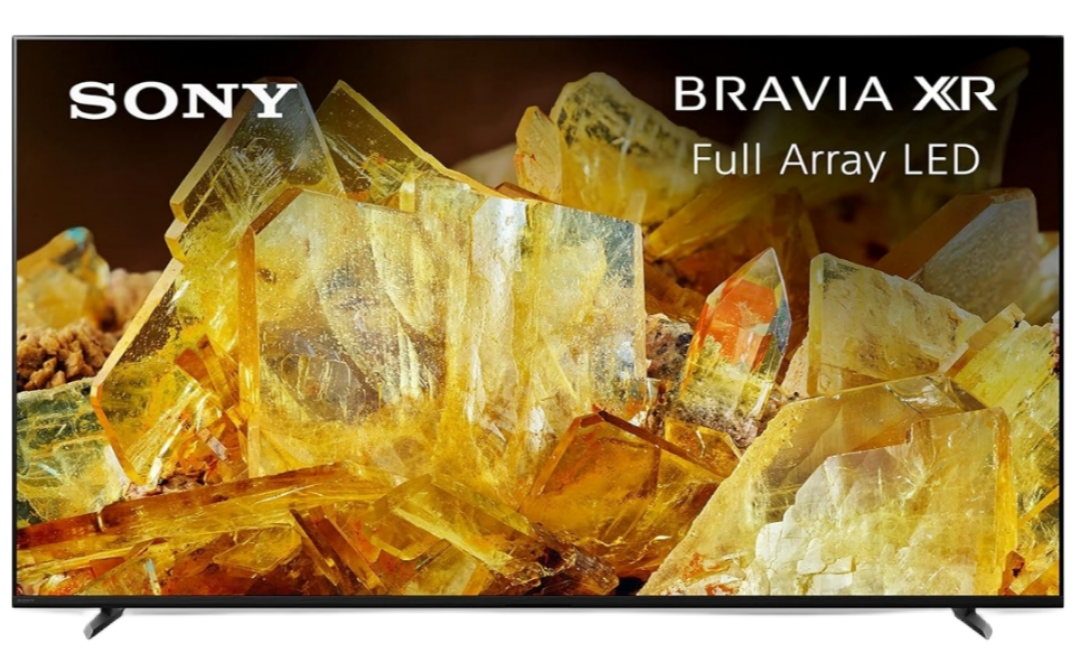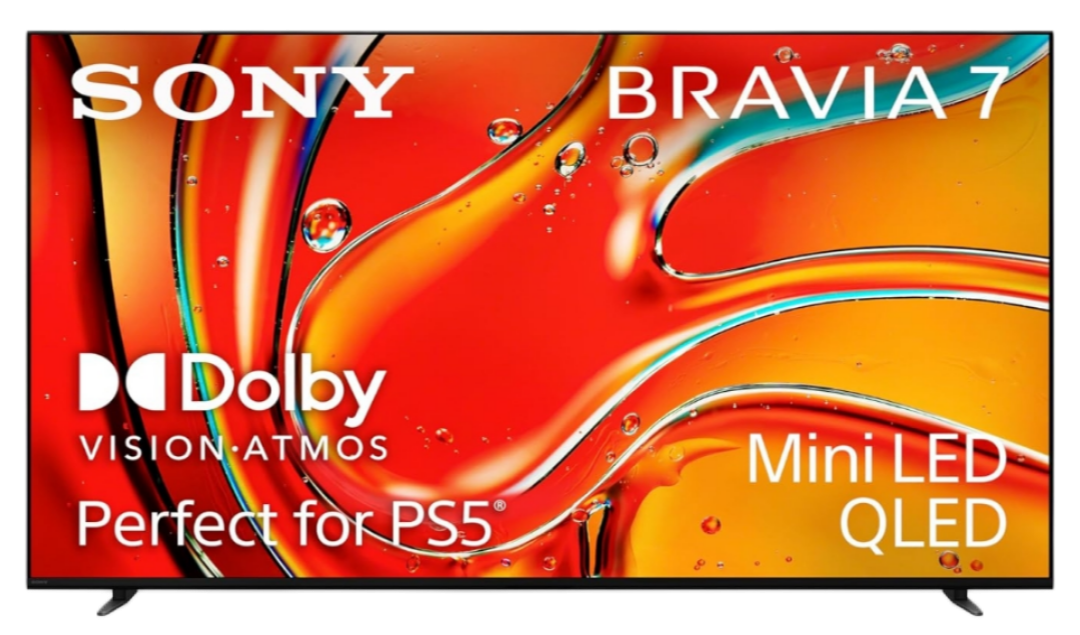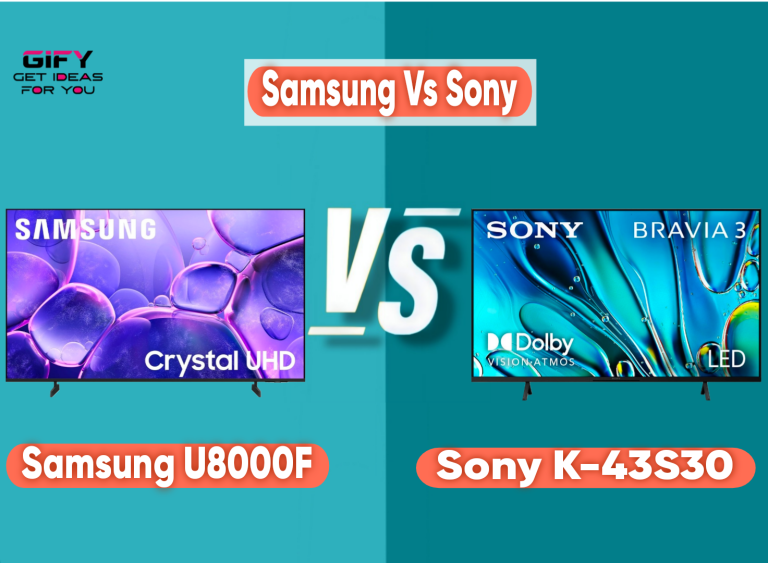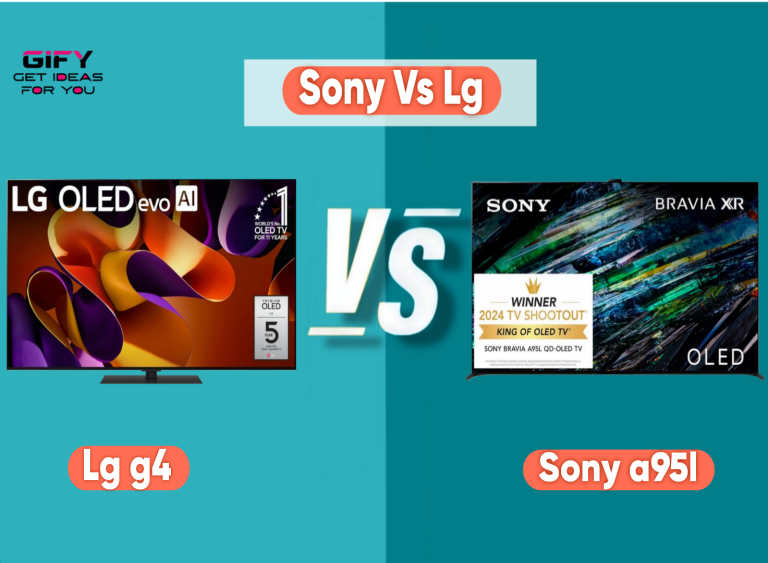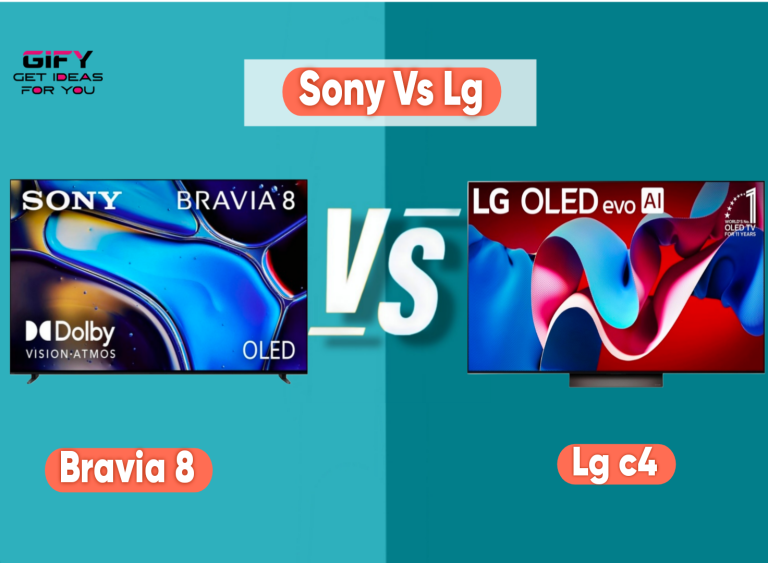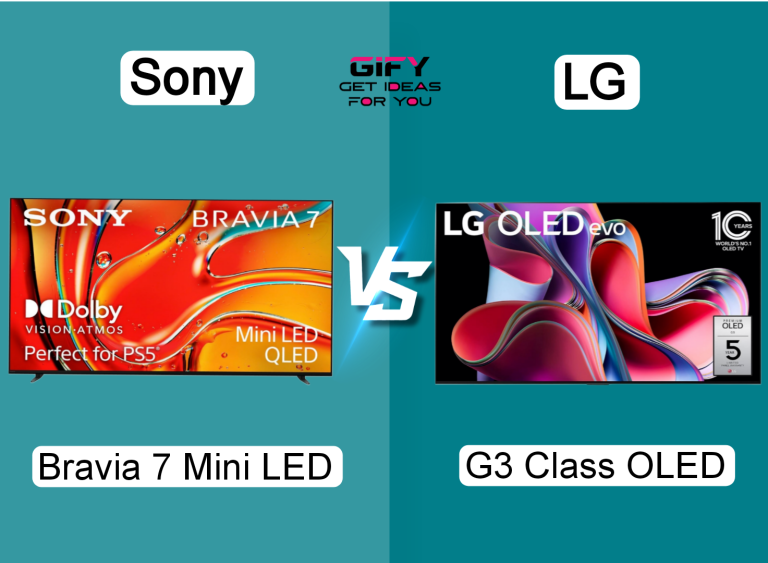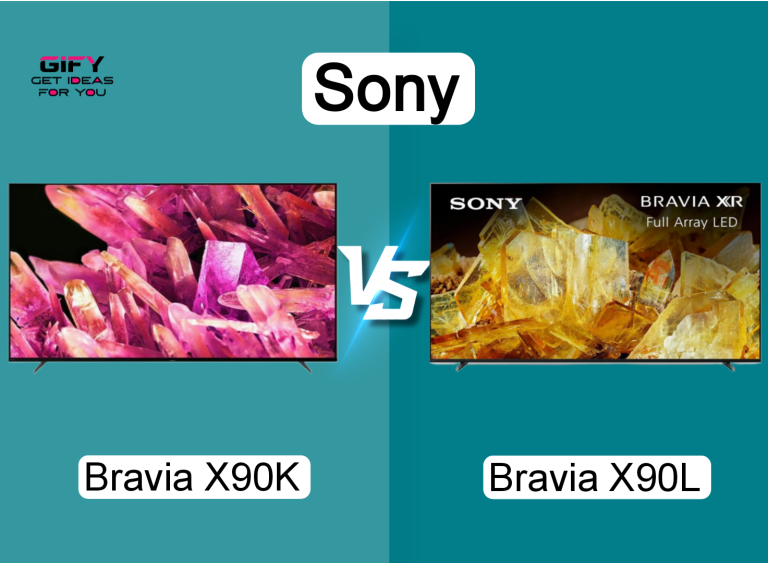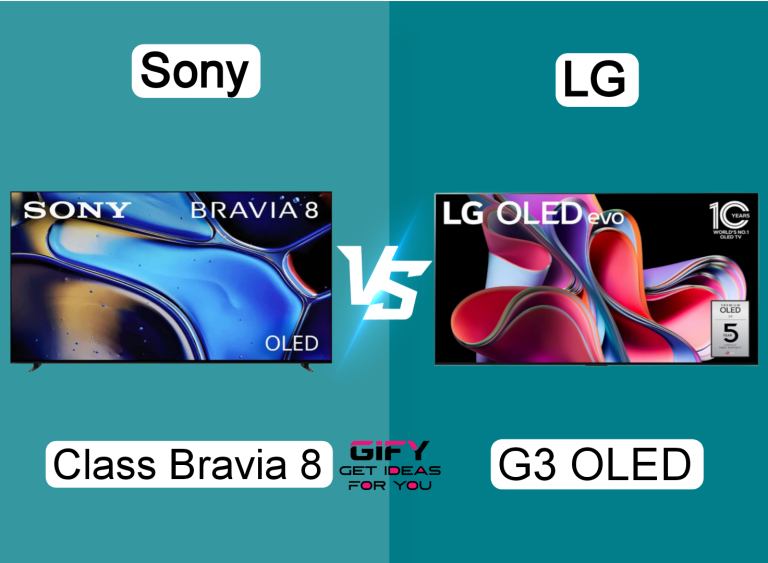Sony X90L vs Bravia 7 is one of the most talked-about matchups among 4K TV enthusiasts. Both models come from Sony’s premium lineup, known for pushing picture quality, performance,
and immersive entertainment to new heights. Whether you’re upgrading your living room setup or hunting for the best gaming display for your PlayStation 5, choosing between these two can feel tricky.
This detailed comparison breaks down their similarities and differences across design, backlight technology, gaming performance, brightness, sound, and more. You’ll discover which TV delivers the better cinematic experience, sharper gameplay, and overall value for your money.
Let’s dive deep into the sony x90l vs bravia 7 showdown to help you make the smartest buying decision for your home theater.
Common Features
Both the Sony X90L and Bravia 7 share a strong foundation of cutting-edge display and sound technologies. Sony continues to refine its visual algorithms and hardware integration, giving users a balance of realism, brightness, and contrast that few brands can match.
Here are the most important shared features:
- Backlight Type: Both models use advanced LED backlight systems designed to enhance local dimming zones for precise contrast control.
- Contrast: High dynamic contrast powered by Sony’s Cognitive Processor XR ensures deeper blacks and brighter highlights.
- Peak Brightness: Both TVs can reach exceptional peak brightness levels, ideal for HDR content and daylight viewing.
- HDR Performance: Support for Dolby Vision, HDR10, and HLG gives you stunning detail in both dark and bright scenes.
- Viewing Angle: Sony’s panel design minimizes color and brightness loss, maintaining picture quality from different angles.
- Gaming Features: HDMI 2.1 with 4K/120Hz, VRR, and ALLM offers smooth and responsive gameplay for next-gen consoles.
- Sound: Acoustic Multi-Audio and Dolby Atmos support deliver immersive sound with accurate positioning.
- Release Year: Both are recent releases, featuring the latest Sony picture processor and Google TV integration.
These shared features ensure that no matter which TV you choose, you’ll enjoy a premium experience with crisp visuals, balanced sound, and feature-packed smart TV functionality.
Sony X90L : Full Array LED Smart Google TV.
The Sony X90L continues the brand’s legacy of realistic visuals and powerful processing. It’s a Full Array LED TV that combines precise contrast control, exceptional brightness,
and lifelike colors. Powered by the Cognitive Processor XR, the X90L intelligently enhances every scene for a cinematic presentation that mirrors real-world perception.
It’s designed for movie lovers and gamers who want a stunning, responsive screen that works beautifully with the PlayStation 5. With Dolby Vision, IMAX Enhanced, and Netflix Adaptive Calibrated Mode, the X90L ensures every frame looks authentic and natural.
What I Like
The Cognitive Processor XR is the star of the show. It delivers rich contrast, vivid details, and a picture that feels closer to human vision. The Full Array LED system performs brilliantly, especially in HDR scenes,
offering deep blacks and sharp brightness without blooming. Google TV integration makes it simple to navigate between Netflix, Disney+, and YouTube, while voice control adds seamless convenience.
Another highlight is the PlayStation 5 optimization. Features like Auto HDR Tone Mapping and Auto Genre Picture Mode automatically adjust settings for better visuals during gameplay or streaming.
The X90L also comes with HDMI 2.1 for 4K/120Hz support, making it perfect for fast-action gaming. The Game Menu gives quick access to all relevant gaming features in one place.
Sound performance is another strong point. The Acoustic Multi-Audio setup positions tweeters behind the screen to match the direction of the visuals, giving a more immersive soundstage. Dolby Atmos and IMAX Enhanced certification ensure top-tier cinematic immersion.
What Could Be Better
While the X90L’s Full Array LED delivers solid brightness, it doesn’t quite match the peak performance of Mini LED displays. Viewing angles, while improved, are still not as wide as on OLED or QLED panels.
The design feels somewhat traditional compared to newer ultra-slim models like the Bravia 7. Some users might also wish for a slightly higher refresh rate option beyond 120Hz for future-proof gaming.
Overall Opinion
The Sony X90L remains a powerful and balanced 4K TV that excels in clarity, contrast, and versatility. It’s ideal for those who prioritize natural color accuracy and solid HDR impact without oversaturation. If you want a reliable performer for both movies and gaming, the X90L offers tremendous value and is one of Sony’s most well-rounded LED options.
Sony Bravia 7 : QLED 4K Ultra HD TV
The Sony Bravia 7 takes things up a notch with Mini LED technology. It delivers higher brightness levels, deeper contrast, and refined light control compared to traditional Full Array LED panels.
The XR Backlight Master Drive precisely controls thousands of Mini LEDs for unparalleled detail and intensity, creating one of the most immersive visual experiences in its class.
Its QLED color layer enhances color accuracy, producing billions of shades for lifelike imagery. Combined with the XR Processor, the Bravia 7 provides consistent sharpness and depth across every frame, even in demanding HDR scenes.
What I Like
The Bravia 7’s Mini LED backlight is the biggest improvement over the X90L. It delivers exceptional contrast and dazzling highlights without halo effects. HDR movies and games appear brighter and more realistic,
even in bright rooms. The addition of QLED color technology brings incredibly rich and accurate hues, making everything from nature scenes to skin tones look lifelike.
It’s also a powerhouse for streaming. With Google TV, AirPlay 2, and Chromecast built-in, you can access all major apps and cast content instantly. The new SONY PICTURES CORE app (formerly BRAVIA CORE)
provides 5 premium 4K movie credits and a 12-month library subscription for endless entertainment. Dolby Vision, IMAX Enhanced, and DTS:X support complete the cinematic experience.
Gamers will appreciate the Bravia 7’s PlayStation 5 optimization. Auto HDR Tone Mapping, Auto Genre Picture Mode, and a redesigned Game Menu make it easy to customize visuals. The XR Clear Image feature improves upscaling of HD content, restoring lost detail and reducing noise for a crisp presentation.
What Could Be Better
Despite its superior backlight and brightness, the Bravia 7 comes at a higher price point. Power consumption is also slightly higher due to the Mini LED array. While the sound is excellent,
the built-in speakers still benefit from a soundbar for full theater-quality bass. Lastly, the advanced features might feel overwhelming to casual users who prefer plug-and-play simplicity.
Overall Opinion
The Sony Bravia 7 is a cutting-edge Mini LED 4K TV that brings cinematic brilliance to your living space. It’s perfect for users who want top-tier HDR brightness, precise contrast,
and the most color-accurate visuals Sony currently offers. With its blend of Mini LED precision and QLED color power, it stands as one of the best non-OLED TVs in the premium segment.
Head-to-Head Comparison
Comparing sony x90l vs bravia 7 reveals how far display technology has come. Both models excel, but they cater to slightly different audiences.
Picture Quality: The Bravia 7 wins here thanks to its Mini LED system and XR Backlight Master Drive, which produce higher peak brightness and tighter contrast control. The X90L still looks outstanding with its Full Array LED and Cognitive Processor XR but falls just short in brightness intensity.
Color and HDR: The Bravia 7’s QLED panel delivers richer and more saturated colors, giving it an advantage for HDR movies and vivid gaming scenes. The X90L, however, maintains a more natural tone that some viewers might prefer for realism.
Gaming: Both TVs support HDMI 2.1, 4K/120Hz, VRR, and ALLM. Input lag is minimal on both, making them ideal for PS5 gaming. The X90L offers slightly faster menu navigation, while the Bravia 7 impresses with higher brightness and HDR depth during gameplay.
Sound: Both support Dolby Atmos, but the Bravia 7 includes DTS:X and has slightly better sound placement due to enhanced Acoustic Multi-Audio technology. Still, both benefit from an external sound system for a fuller experience.
Design: The Bravia 7 has a sleeker and more modern appearance with a slimmer profile, while the X90L has a classic Sony frame design that’s still elegant but not as thin.
Value: The X90L is the better choice if you want flagship-like performance at a lower price. The Bravia 7 is for those who want the absolute best image quality Sony offers without stepping into OLED territory.
In short, the sony x90l vs bravia 7 debate boils down to preference. Choose the X90L for balanced performance and affordability, or go for the Bravia 7 if you want unmatched brightness, deeper contrast, and a futuristic design.
Related Article 🎀
FAQs : Sony X90L vs Bravia 7
Is the Sony Bravia 7 better than the X90L?
Yes, the Bravia 7 offers superior brightness, contrast, and color thanks to its Mini LED and QLED technology. The X90L still provides excellent performance at a more affordable price.
Does the Sony X90L support HDMI 2.1?
Yes, it includes HDMI 2.1 ports with 4K/120Hz, VRR, and ALLM support, making it ideal for PS5 and Xbox gaming.
Which TV is better for gaming?
Both are optimized for PlayStation 5, but the Bravia 7’s brighter panel offers a slight edge in HDR gaming visuals.
Can I stream Netflix and Disney+ on both TVs?
Yes, both models feature Google TV with built-in apps for Netflix, Disney+, Prime Video, YouTube, and more.
What is the main difference between Sony X90L and Bravia 7?
The X90L uses a Full Array LED backlight, while the Bravia 7 uses Mini LED and QLED technology for higher brightness and better contrast.
Do both support Dolby Atmos?
Yes, both support Dolby Atmos, but the Bravia 7 also includes DTS:X for a wider audio experience.
Conclusion
The sony x90l vs bravia 7 comparison showcases Sony’s impressive evolution in 4K TV technology. The X90L is a top-performing LED TV with strong contrast and gaming features, while the Bravia 7 delivers next-level brightness and cinematic visuals through Mini LED innovation.
If you value affordability and consistent performance, go for the X90L. For those seeking the best HDR performance and brightness possible in a non-OLED display, the Bravia 7 is the clear winner.

